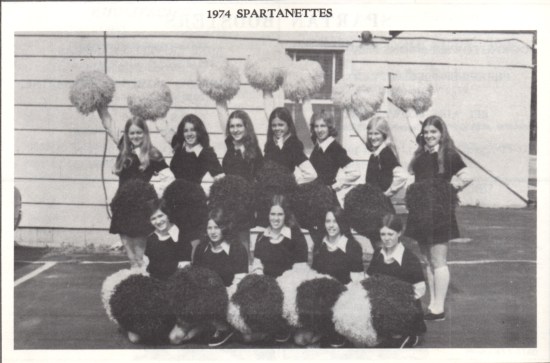As promised in the 1972 Central States Football League (CSFL) Yearbook post, scans from the pro-football league’s 1974 yearbook.
This one is also from the Wisconsin team the West Allis Spartans.
(Again, if you wish to post/share these images, please credit this site with a link to this post, thanks!)
Opening message from Al Nau, President, wiht game action photo of guards Mike Chowaniec and Bob Daley pulling in front of running back Randy Letsch to start the sweep.
Robert Daley and James Glembin
Errol Barnett and George Grbich
Ted Dyrnda and Rick Kujawa.
Tom McKinney (who’s photo looks more like a silhouette — a shame when he’s called “among the best in CSFL history”) and Paul Lathrop.
Gary Zauner and John Hammer.
Mike Garecki and Dick Bilda.
Jim Tharpe (played with Cleveland Browns in 1070) and Doug Erlancher.
Jeff Jonas and Larry Wakefield.
Willie Carter and Brian Wilson.
Central States Football League Statistics, 1973. The pro-football league divisions as follows:
Northern Division:
Madison Mustangs (Divisional Champs)
Manitowoc Co. Chiefs
Wes Allis Spartans
Sheboygan Co. RedwingsSouthern Division:
Lake Co. Rifles (Divisional Champs)
Rockford Rams
Racine Raiders
Delavan Red Devils
Coaches & Staff: Jerry Zunk, Head Coach; Mike Heckel, Assistant Coach; Kurt Abraham, Assistant Coach; John Seyboldt, Assistant Coach; Grayle Bolkman, Head Trainer; Ed Kozak, Head Equipment Manager.
A full-page ad for Lincoln Contractors Supply, Inc., which proclaims their heavy support of the CSFL team (home of the Spartan offices, help finding recruited players jobs, etc. “[W]e do everything else we can to make the Spartans a ‘Success’ — all without cost to the club.”)
Game schedule with ads, including photo of Bob Dohnal, a pharmacist at Larry’s Rexall Drugs.
Spartan Boosters with photo of the Spartan cheerleaders, the Spartanettes.
Spartans football action shot.
The Spartanettes.
West Allis Spartans, Inc. officers, board of directors, stockholders.
Back cover “Go Spartans!’ ad from Post Publications (West Allis Star).

































































